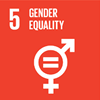Factsheet
The quantity and quality of women’s work
Over the past three decades, there has been notable progress on certain key dimensions of gender equality. Almost universally the gender gap in education has been narrowed and commitments to secure equal access to employment have advanced. However, the rate of progress towards gender equality in employment has varied extensively both within and between regions, with the Middle East and North Africa (MENA) and South Asia lagging the furthest behind.
This factsheet considers trends in the quantity and quality of women’s work in specific country examples from three regions: the Middle-East and North-Africa, sub-Saharan Africa (SSA), and South Asia. The descriptive statistics highlighted here suggest that the trends in the quantity and quality of women’s work often follow very different patterns. It is often true that when countries increase women’s labour force participation, women are also increasingly represented in vulnerable employment. While caution is required in the interpretation of these figures1, they do indicate that the factors which determine the quantity of women’s work are not necessarily the same factors which determine the quality of the jobs women find.
In the graphs shown here, we use the proportion of female to male rates of labour force participation as a measure of the quantity of women’s work and the proportion of female to male rates of vulnerable employment2 as a measure of the quality of women’s work. The first measure indicates the size of the gender gap in terms of participation in the labour market and the second measure tells us whether or not working women are overrepresented in vulnerable types of employment, or what might be thought of as bad jobs.
In most developing countries, we observe a rising trend in vulnerable employment for both men and women, reaching 76.4 per cent of total employment in low-income countries and 46.2 per cent in middle-income countries in 2018 (ILO 2018). Behind these average values, important differences appear between men and women in the gender composition of vulnerable employment.
South Asia
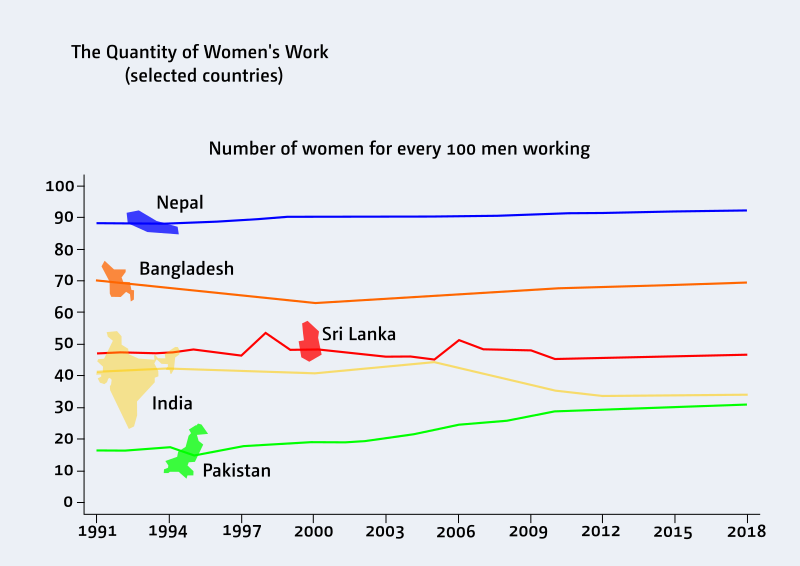
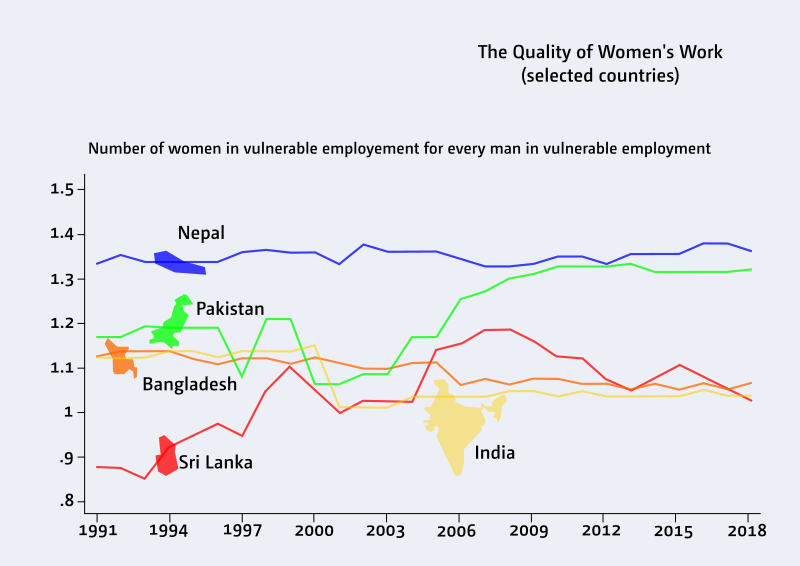
In South Asia, as elsewhere, more women work in conditions of vulnerable employment than do men. Nepal and Pakistan have the highest shares of vulnerable employment for women, with the quality of work in Pakistan having deteriorated the most for women. In terms of the quantity dimension, though, Nepal has the greatest equality in labour force participation in the region and even though Pakistan has the least equality in this dimension, it has seen the biggest improvement over the period. In contrast, India and Sri Lanka have seen women’s labour force participation stagnate, but in these countries, women are also not overrepresented in vulnerable employment.
The Middle East and North Africa
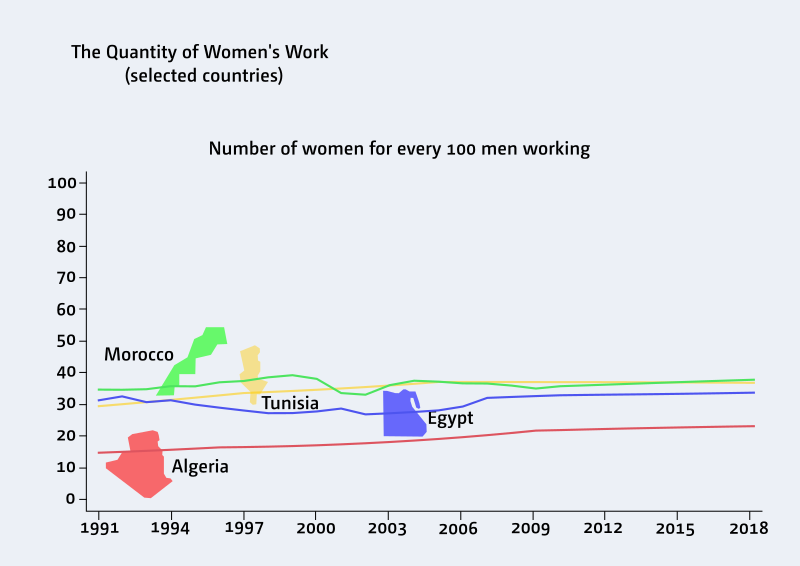
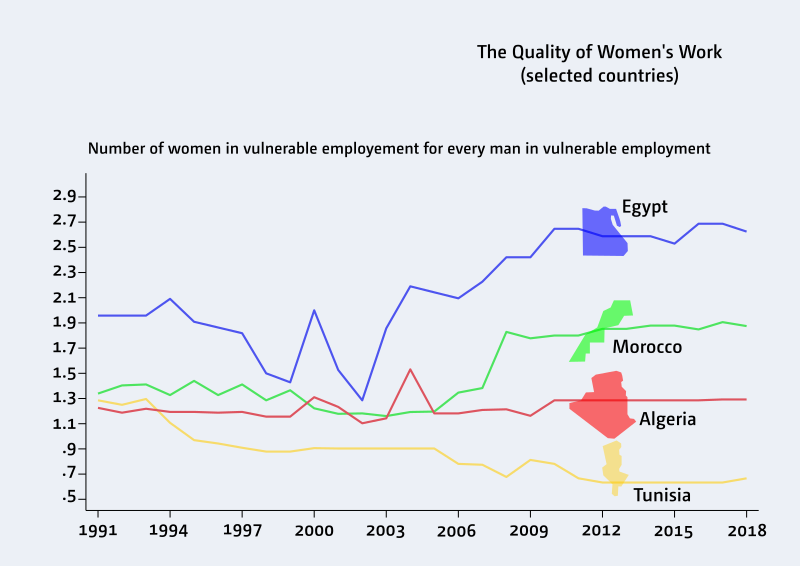
In MENA, countries such as Egypt and Morocco are underperforming in both dimensions. Very few women are working in Egypt and Morocco, with rates of participation similar to those in India, and the women who do work are increasingly over-represented in vulnerable employment. In Eqypt, women are overrepresented in vulnerable employment by more than two to one (2:1) relative to men. This is very different from other countries in the region, such as Tunisia and Algeria, where progress for women in the quantity dimension was also matched by progress in the quality dimension.
Sub-Saharan Africa
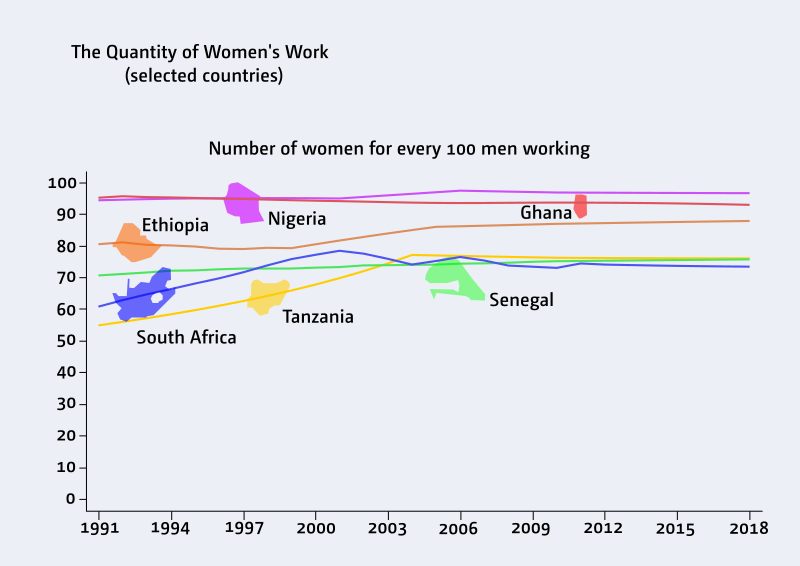
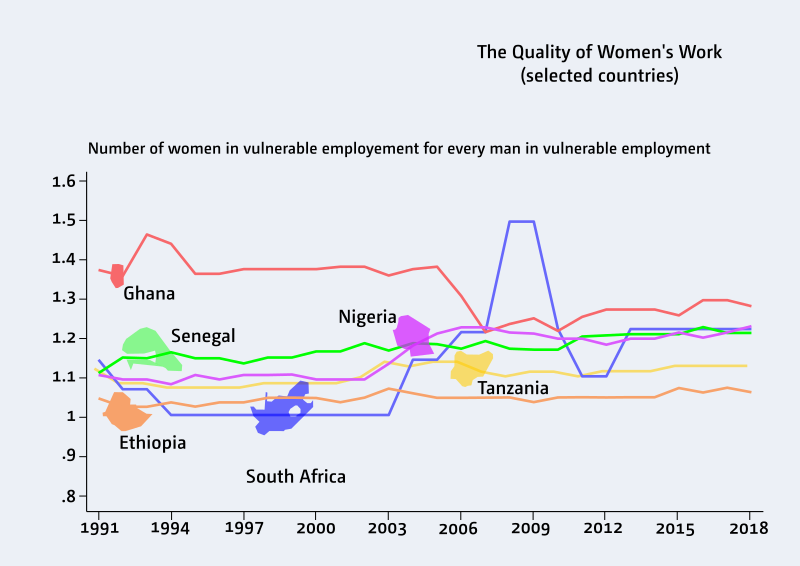
As the figures suggest, SSA countries have a more gender equal pattern of workers in vulnerable employment categories. This can be observed particularly in Ethiopia and Tanzania where high rates of female labour force participation are also exhibited. In Nigeria and South Africa, the share of women in vulnerable employment has increased. Both these countries also recorded improvements, followed by stagnation from the mid-2000s, in the female labour force participation rates. Lastly, we observe that in Ghana – which exhibited in the 1990s the smallest gender gap in the labour force participation of the region but the largest gap in vulnerable employment – progress has been made recently in the quality dimension of women’s work and the gap in vulnerable employment has almost been closed.
 Join the network
Join the network
